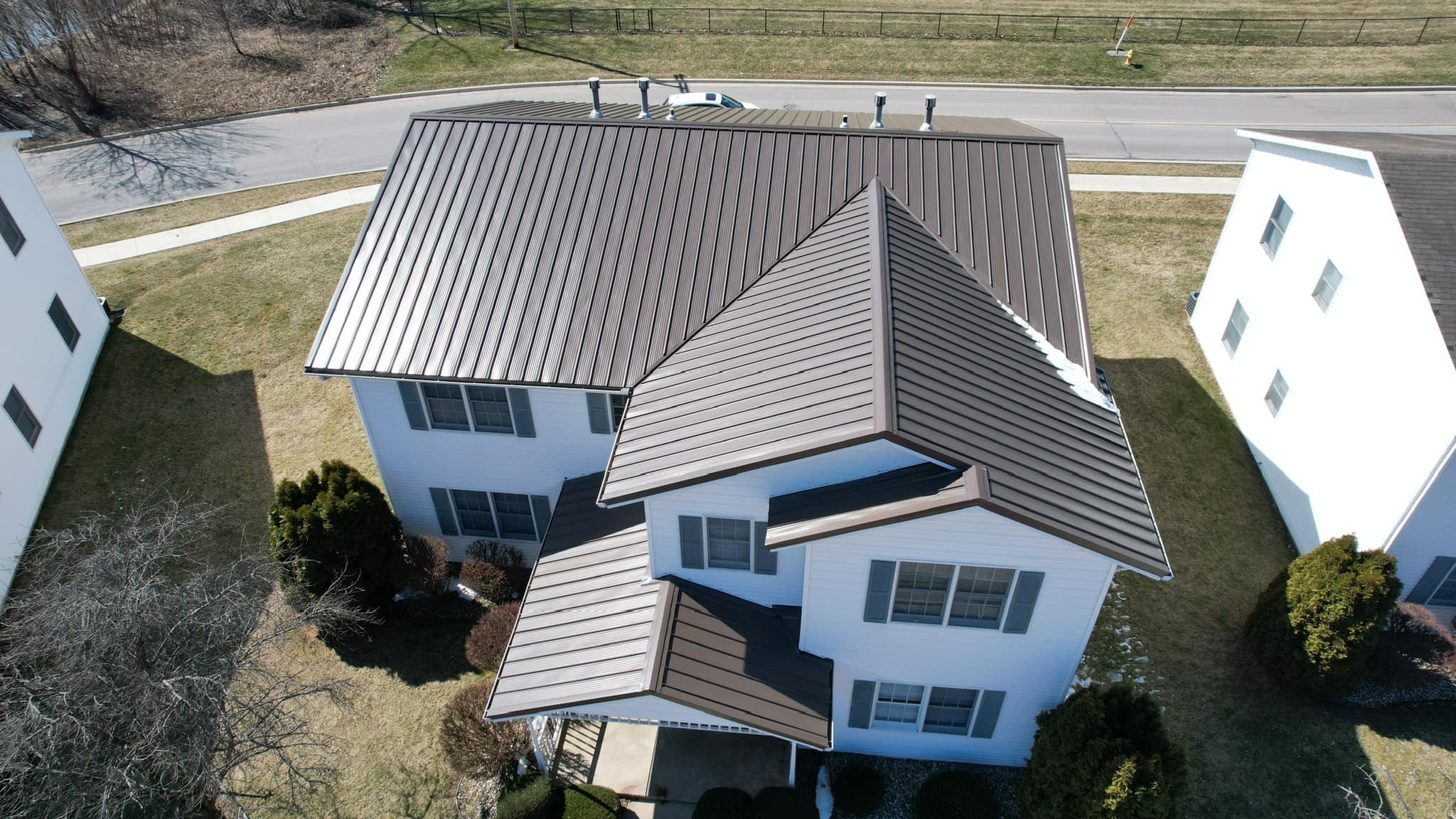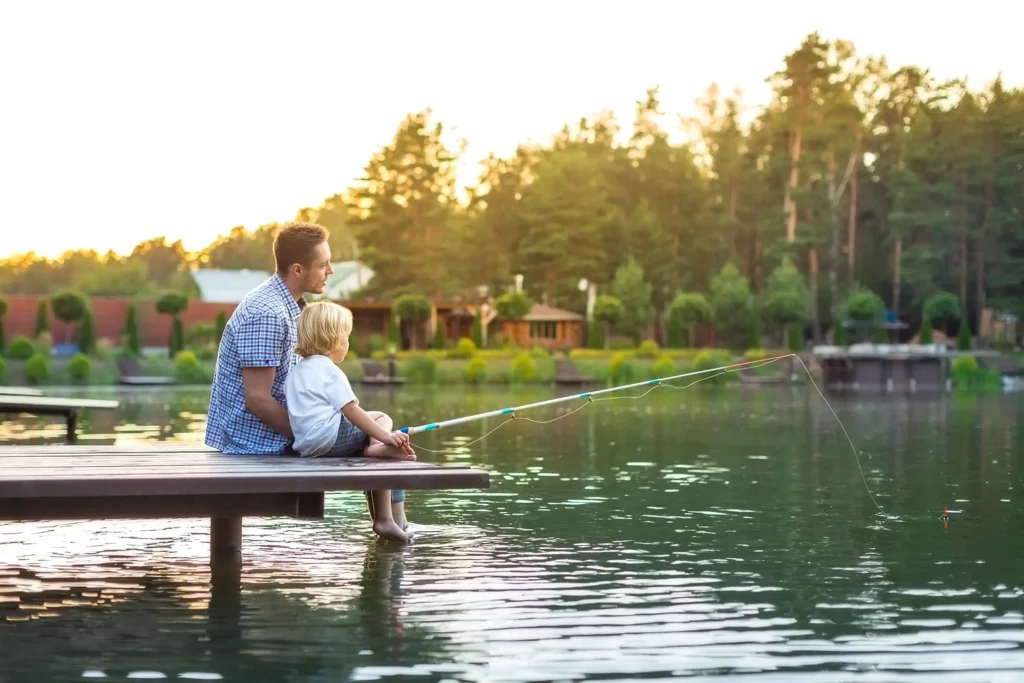
How Much Does a Metal Roof Cost? (And Why It Varies)
Let’s talk metal roofing.
This is one of the questions we get asked the most: “How much does a metal roof actually cost?”
We get it. You’re probably seeing prices all over the place—some quotes that seem weirdly cheap, and others that make you wonder if you’re buying a roof or a Ferrari.
Here’s the truth: there’s no one-size-fits-all answer. In Indiana, the cost of a metal roof typically lands between $6 to $15 per square foot, fully installed. So for a 2,000 sq ft roof, that’s somewhere between $12,000 and $30,000+.
But don’t panic. In this guide, we’ll break down exactly what makes the price go up or down—so you can spot a solid quote from a sketchy one and know where your money’s going.
1. Metal roofing comes in many different styles and gauges
Styles
The key difference here is whether the fasteners are exposed or not. With exposed fasteners, the seals on the screws deteriorate over time due to the sun’s UV rays, which can create leaks. Hidden fasteners have a flange on one side, similar to siding, but vertical thast we screw into to fasten it. The next piece interlocks and covers up all the screws. Each piece is hand-formed to interlock with the eaves and ridges, creating a seamless finish.
As ever, the better choice also tends to be the most expensive. If you can afford a hidden fastener, then choose that method. It’ll last longer and look better.
Roofers may also use a system called Decra. This system allows you to have an asphalt shingle roof look with the performance of a metal roof.
Gauges
The gauge is the thickness of the metal. Typically, roofing metal comes in 24, 26, 28, 29 gauge. The thickest of those is (confusingly, the 24 gauge), around 0.61mm thick. So the lower the gauge, the better and as ever, price is the key factor here. Go for 24 if it fits your budget and is available in your colour.
Some metals are rugged and budget-friendly. Others are top-shelf luxury. Here’s the breakdown:
| Metal Type | Installed Cost (per sq ft) | Pros | Cons |
| Exposed Fastener | $6–$12 | Affordable | Screw grommets tend to burn out over time |
| Hidden Fastener | $9–$17 | Longer-lasting, more appealing finish. | Less affordable but more value over time. These roofs can make a noise as they expand and contract. |
Copper | $20–$30+ | Stunning appearance, lasts 100+ years | |
| Decra | $9–$18 | Looks great, longer warranty than others. Asphalt looks with the metal performance. | Can be more expensive than plain asphalt, requires trained installers, so not DIY friendly. |
At Better Way Roofing, our panels all have Galvolume Protection with A Durable Paint finish, which gives great longevity and an attractive finish.
Lyle’s Pro Tip: Class 4 impact-rated metal panels may get you a discount on your homeowners’ insurance. Worth asking your insurer.
2. Hidden vs. Exposed Fasteners (aka Fancy vs. Functional)
This one catches folks off guard all the time.
There are two main styles of metal roofing, and they don’t just look different—they cost differently:
The key difference here is whether the fasteners are exposed or not.
With exposed fasteners, the seals on the screws deteriorate over time due to the sun’s UV rays, which can create leaks.
Hidden fasteners have a flange on one side, similar to siding, but vertical that we screw into to fasten it. The next piece interlocks and covers up all the screws. Each piece is hand-formed to interlock with the eaves and ridges, creating a seamless finish.
As ever, the better choice also tends to be the most expensive. If you can afford a hidden fastener, then choose that method. It’ll last longer and look better.
Roofers may also use a system called Decra. This system allows you to have an asphalt shingle roof look with the performance of a metal roof.
➤ Exposed Fastener
- You’ll see the screws from the ground
- More budget-friendly
- Quicker install
➤ Hidden Fastener
- Sleek, clean look—fasteners hidden under seams
- Less chance of leaks over time
- More expensive (typically 30–50% more)
Lyle’s Pro Tip: Want a modern, high-end look? Go with a hidden fastener. Want value and durability on a budget? Exposed fastener might be your guy.
3. Roof Complexity: Shape and Slope Matter
Flat roofs? Less expensive.
Steep, cut-up, weirdly shaped roofs, two-story … Not so much. Solar panels also add cost due to detach and reset meaning more labor costs.
Here’s what affects the labor cost:
- Steep pitch = slower work, more safety gear
- Multiple roof planes, valleys, and dormers = more time
- Skylights, chimneys, satellite dishes = more cutting and flashing
- Removing an old roof = tear-off labor + disposal fees
In short, the more complex your roof, the more hours it takes to do it right.
Lyle’s Pro Tip: Always ask and make sure you know what flashings get replaced and how and why; these will be the problem areas if not addressed upon installation.
4. Finish, Color, and Coating (It’s Not Just for Looks)
Believe it or not, color affects more than just curb appeal.
Some colors reflect heat better – the lighter the color, the less heat it will absorb.
Some coatings last longer – textured costs a little more and is easier to walk on. Choice here comes down to personal preference, and there is no huge cost implication.
Lyle’s Pro Tip: Consider how often you will need to be on your roof. If you need to be up there to clean out the chimney often, then consider a textured finish.
5. Decking, Insulation & Ventilation
Here’s what no one tells you: what’s under the metal is just as important as the metal itself. It is tempting to save money here, but don’t skip an attic inspection. This way, you can be sure the decking is in good condition before you go ahead.
You might need:
- New sheathing/decking if the old roof is rotted or uneven. Typically $50-$85 per 4’x8’ sheet, depending on the pitch.
- Ice and water shields (required in many Indiana counties). Usually between $130 and $325 per square foot. (10 ’ x 10’ area)
- Vapor barriers or insulation if you’re converting an unventilated attic. Expect to pay $180 – $350 per square foot. (10 ’ x 10’ area)
These aren’t “extras”—they’re what make the system actually work.
Lyle’s Pro Tip: If you’ve had issues with mold, leaks, or ice dams in the past, don’t skip this step.
6. Installation Quality & Warranties
This is where the real value lies.
You can buy the best metal in the world—but if it’s installed wrong, none of it matters.
Look for:
- Manufacturer-approved install methods
- Proper fastening and flashing techniques
- Multiple recent reviews from happy customers
- Length of time your contractor has been in business.
Lyle’s Pro Tip: Ask your contractor how many years they have been in business. If a business disappears, so does your warranty.
8. Market Factors: Why Prices Change Month to Month
This isn’t just contractor fluff—prices really do move based on:
- Steel and aluminum commodity prices
- Transportation and fuel costs
- Labor availability (especially after storms)
- manufacturer’s lead times on certain colors or panel types
Lyle’s Pro Tip: Locking in your quote now can save you from a material price jump next quarter.
Bottom Line: So What Will Your Metal Roof Cost?
Here’s the only honest answer: we don’t know yet—but we can find out fast.
Until we’ve measured your roof, talked through what you want, and looked at your ventilation, fastener style, and color choice… It’s just guesswork.
What we do promise:
- You’ll get a quote with no hidden charges and no surprises.
- We’ll explain what every option does (and doesn’t) do
- No pressure—just expert guidance
Ready to Find Out What a Metal Roof Will Cost for Your Home?
We’ll hop on your roof, walk the property, answer your questions, and get you a detailed estimate within days.
👉 Click here to schedule your free estimate
Or give us a call at (574)370-8342
